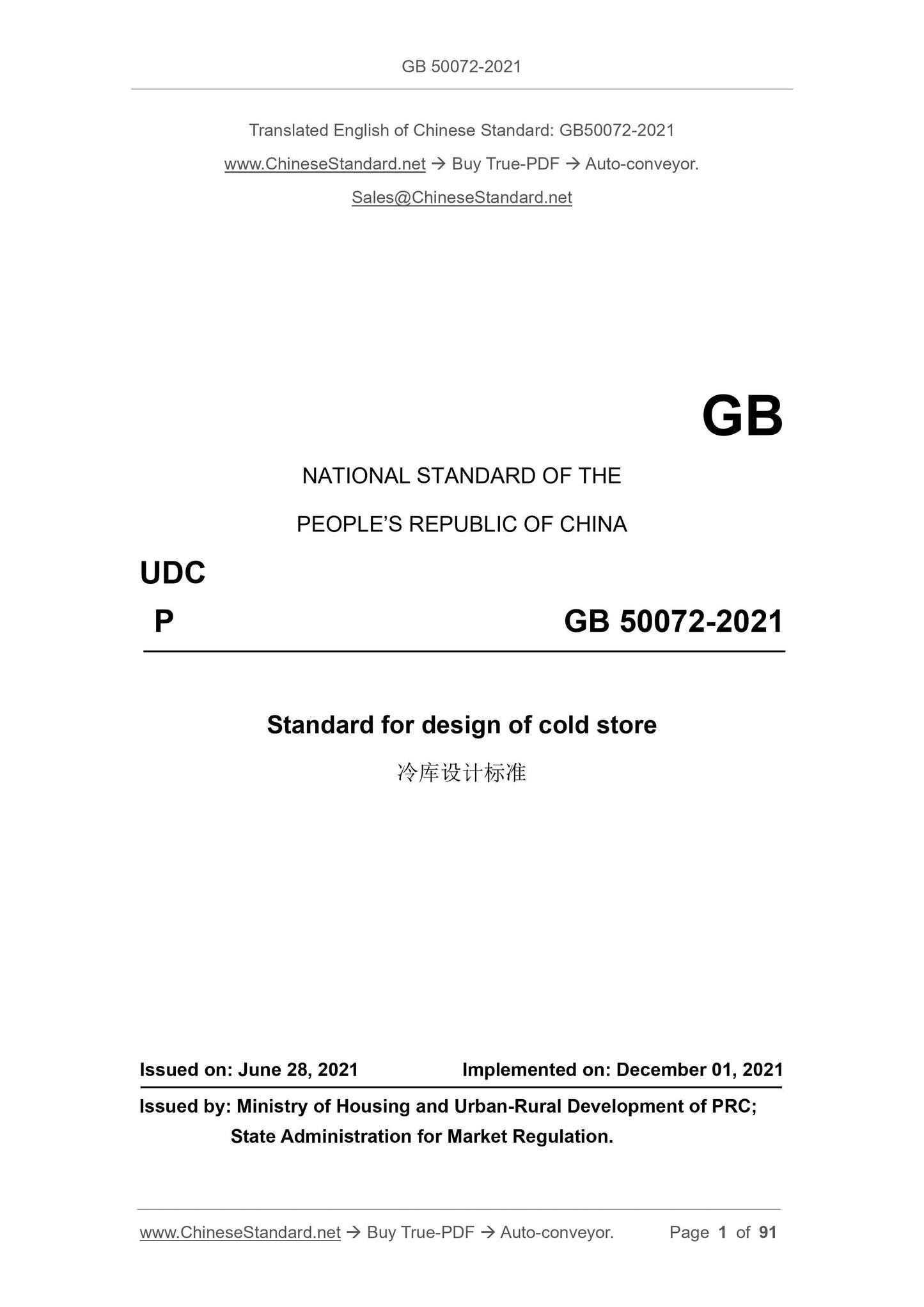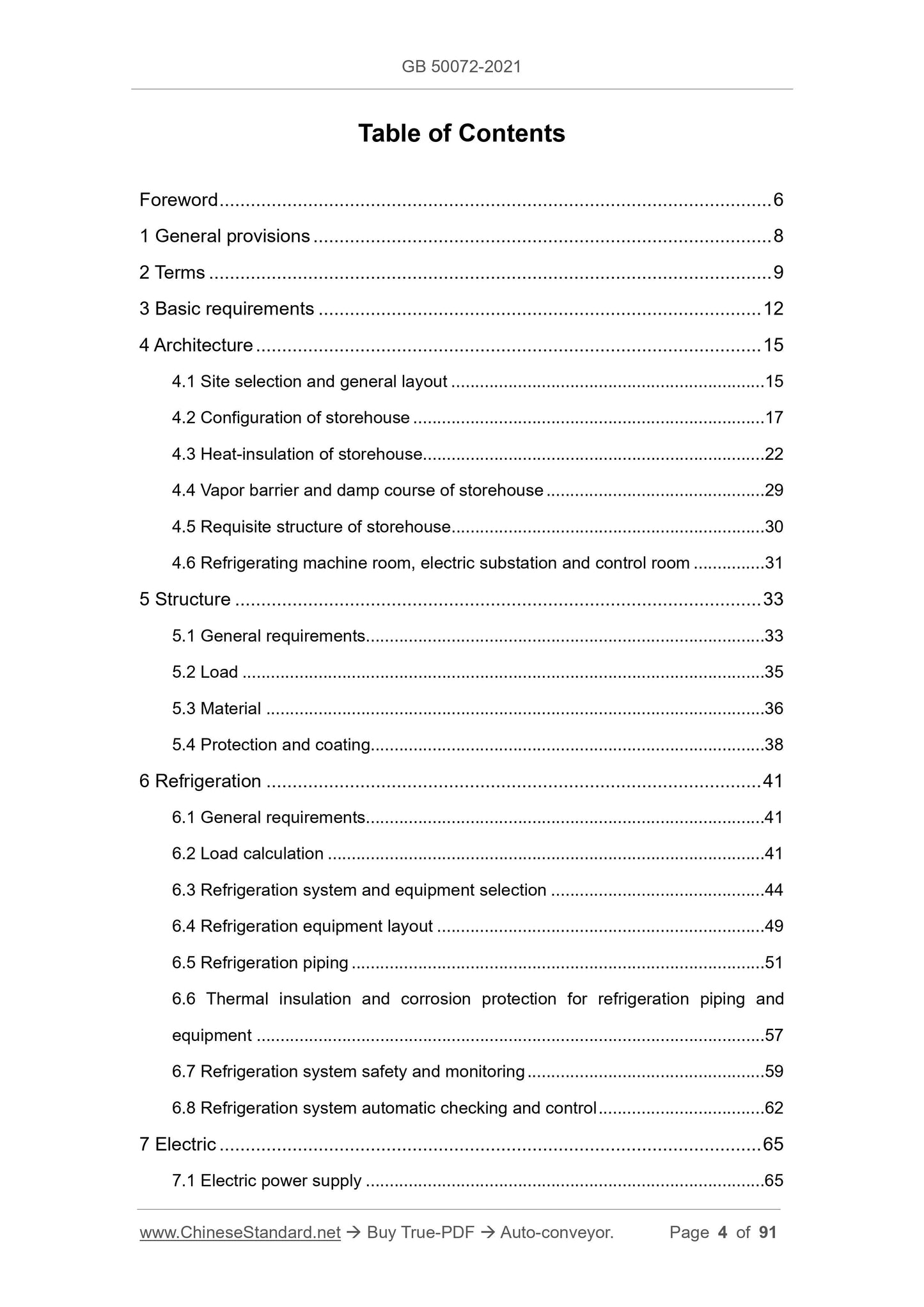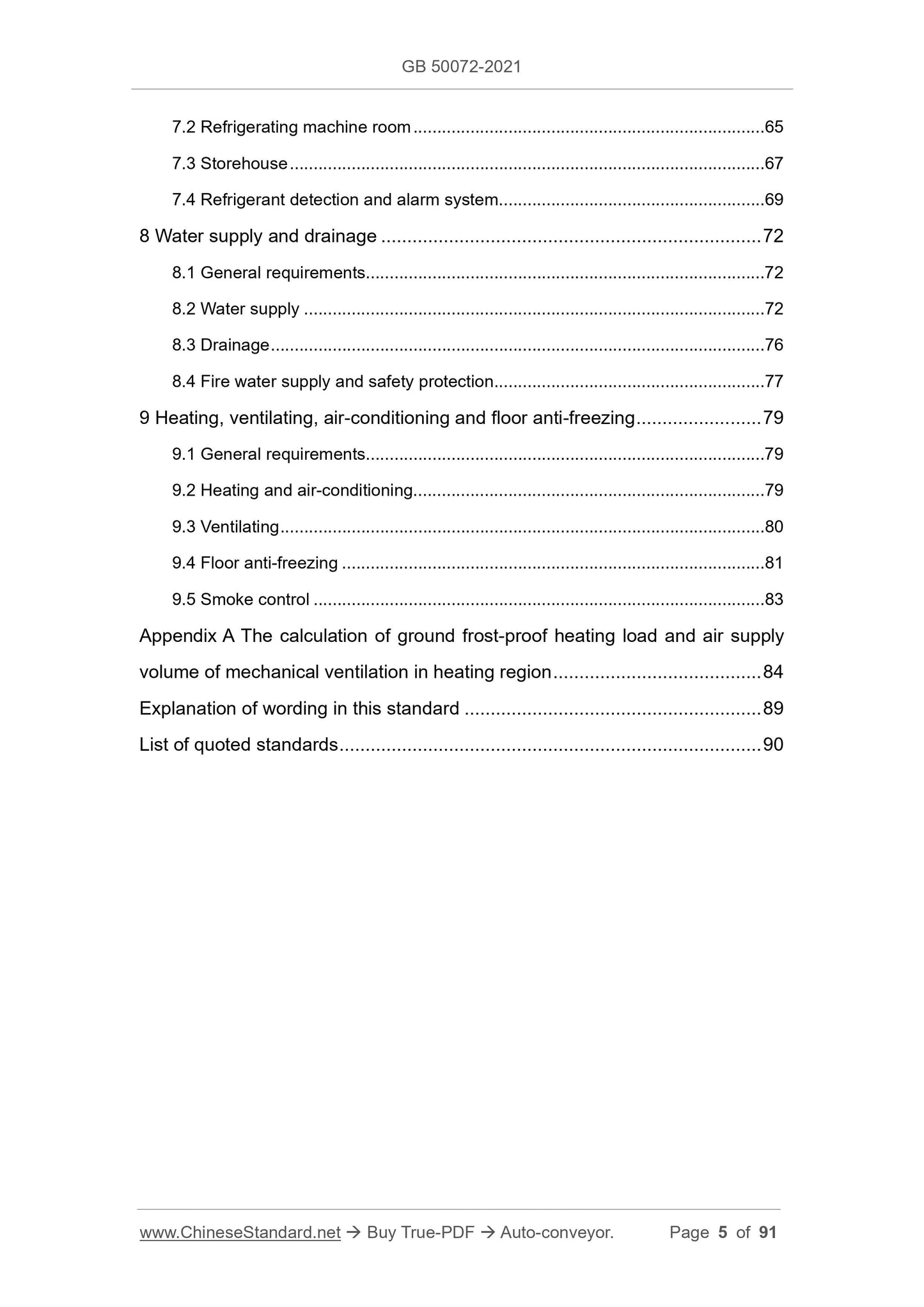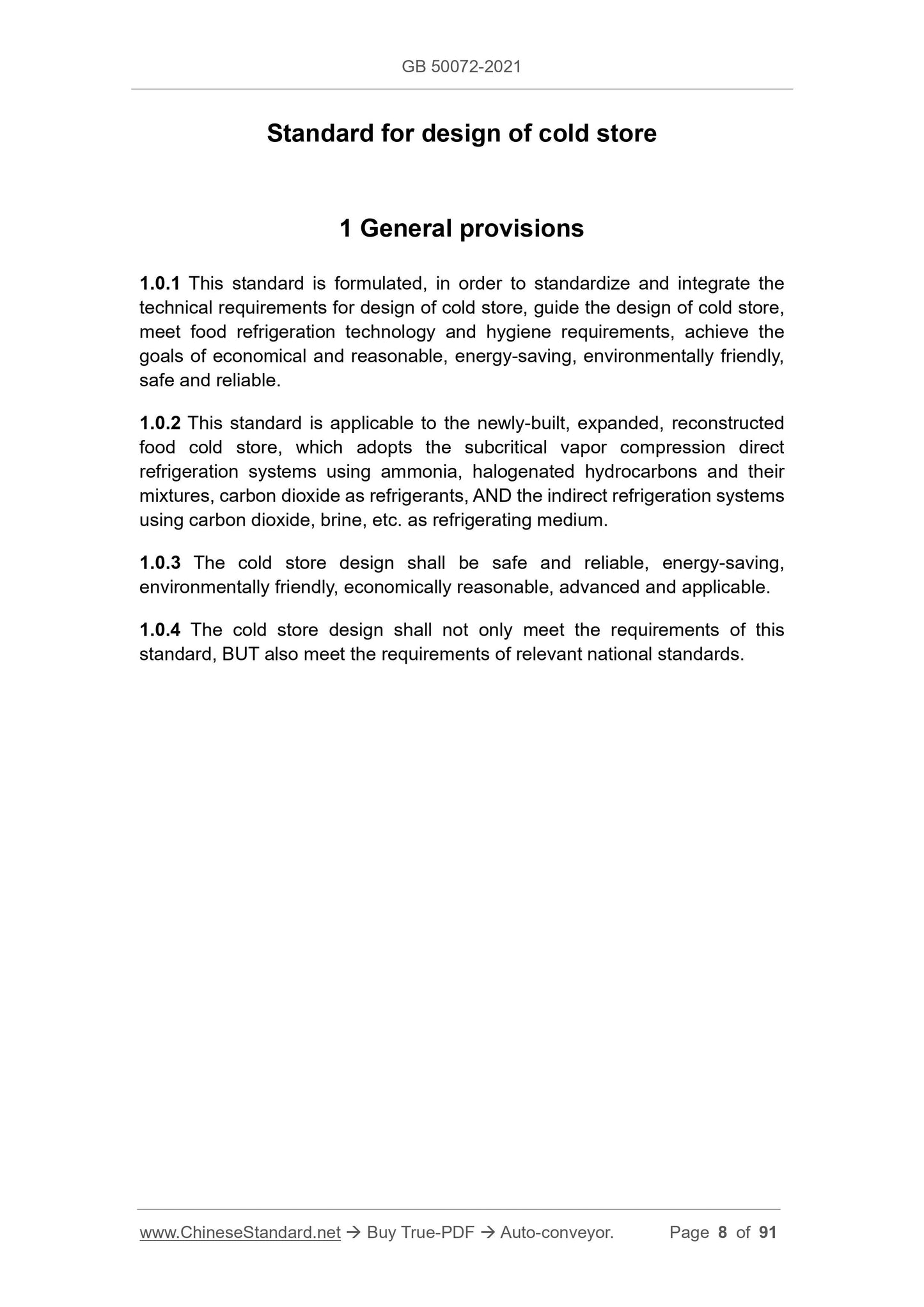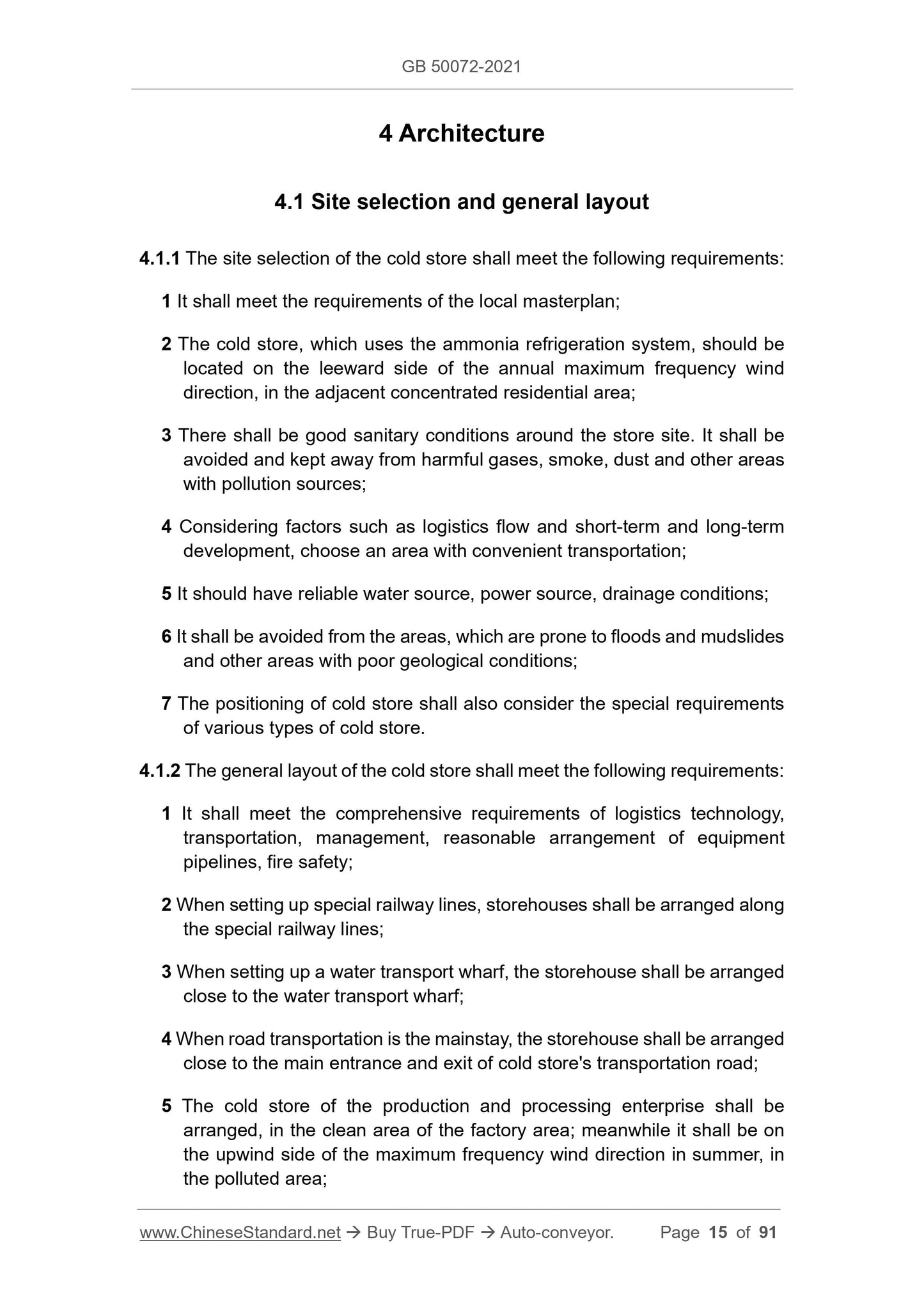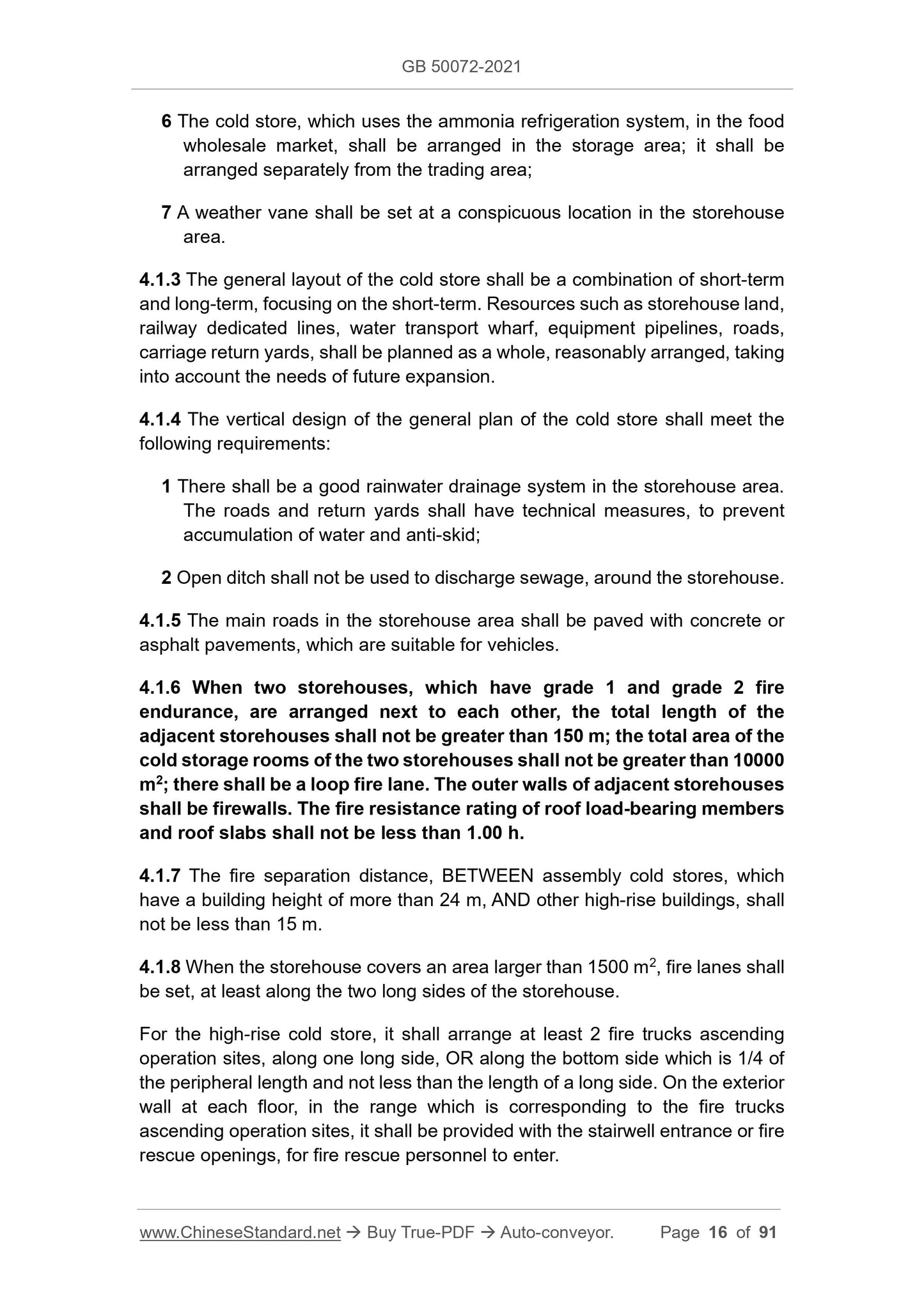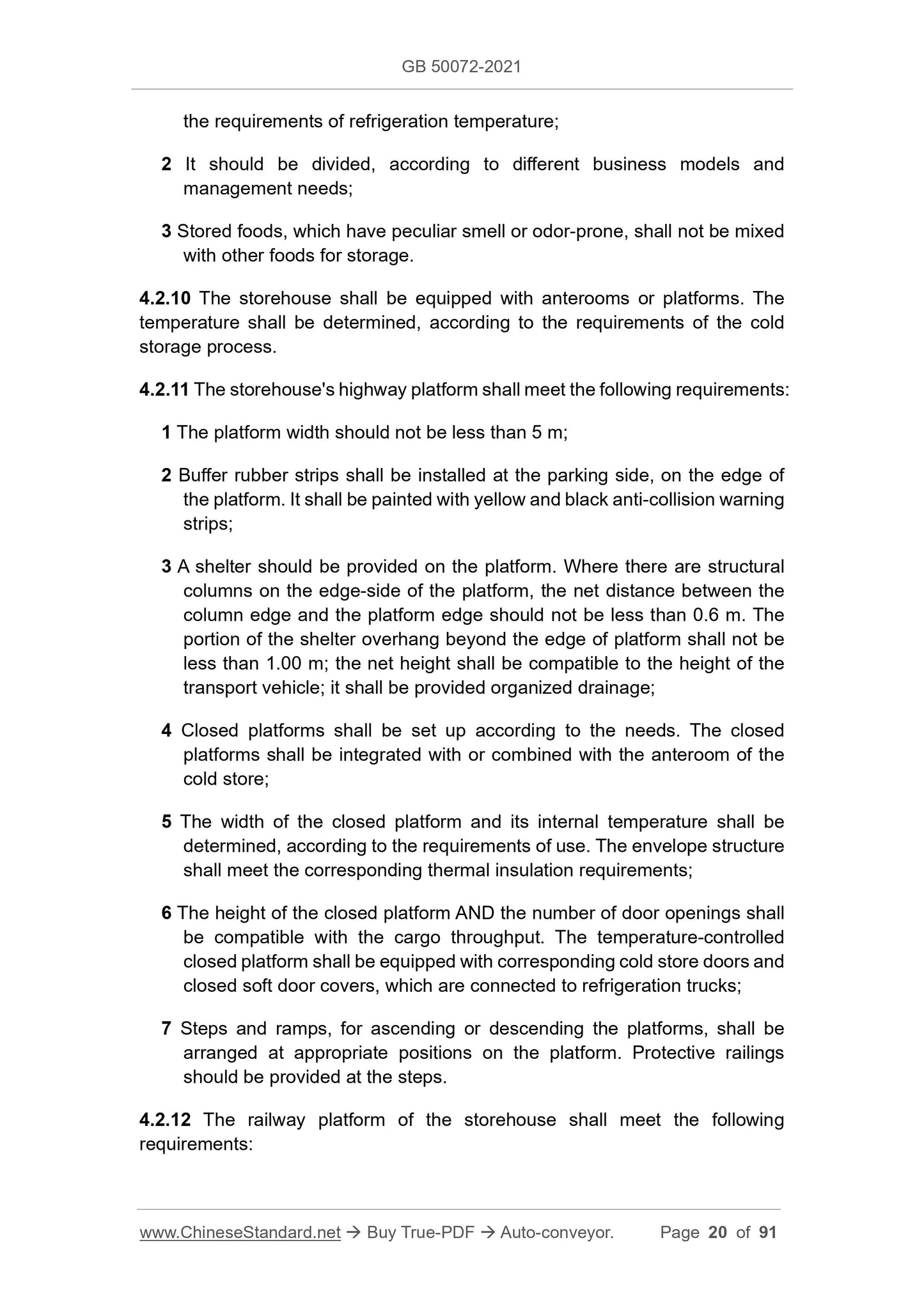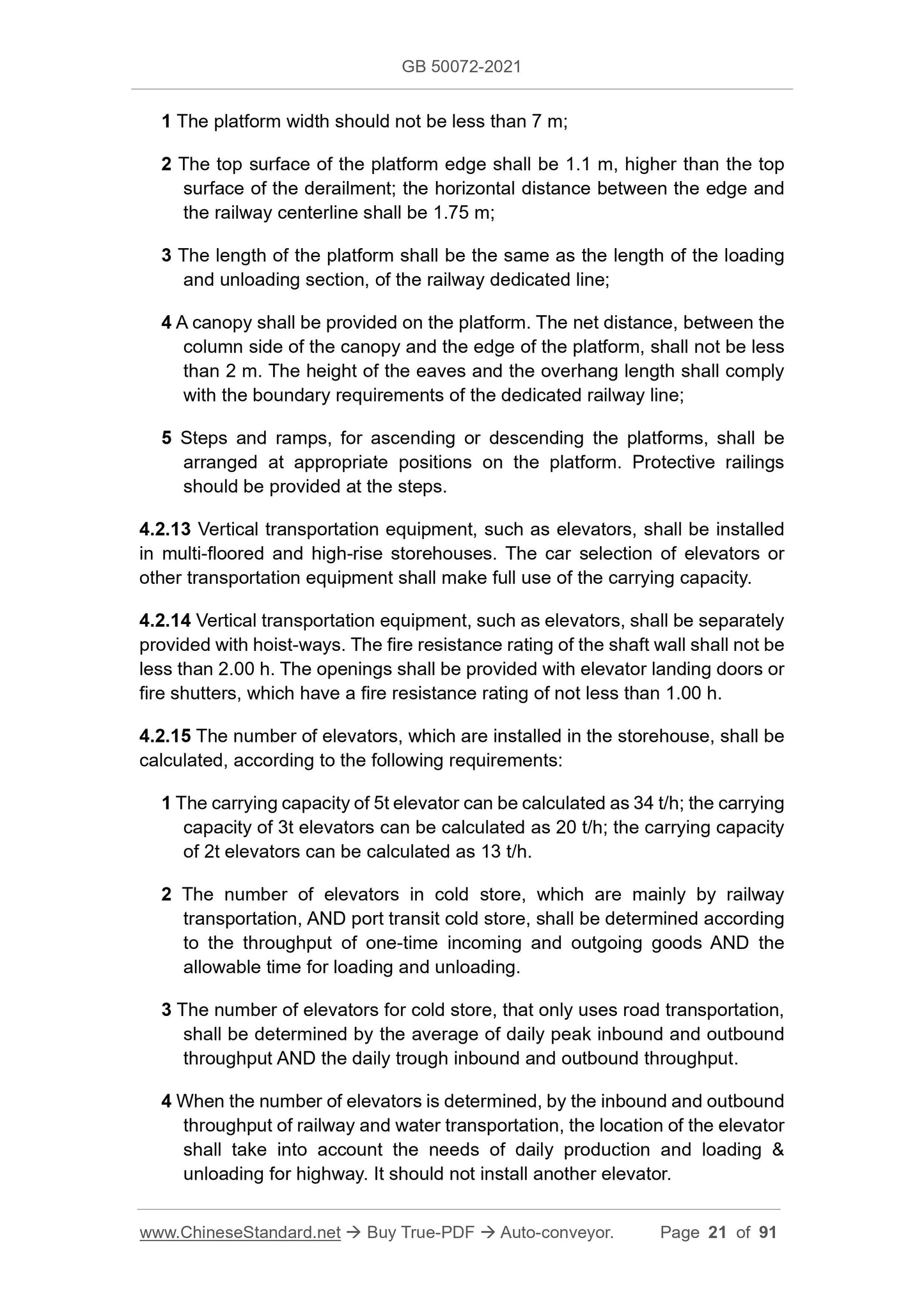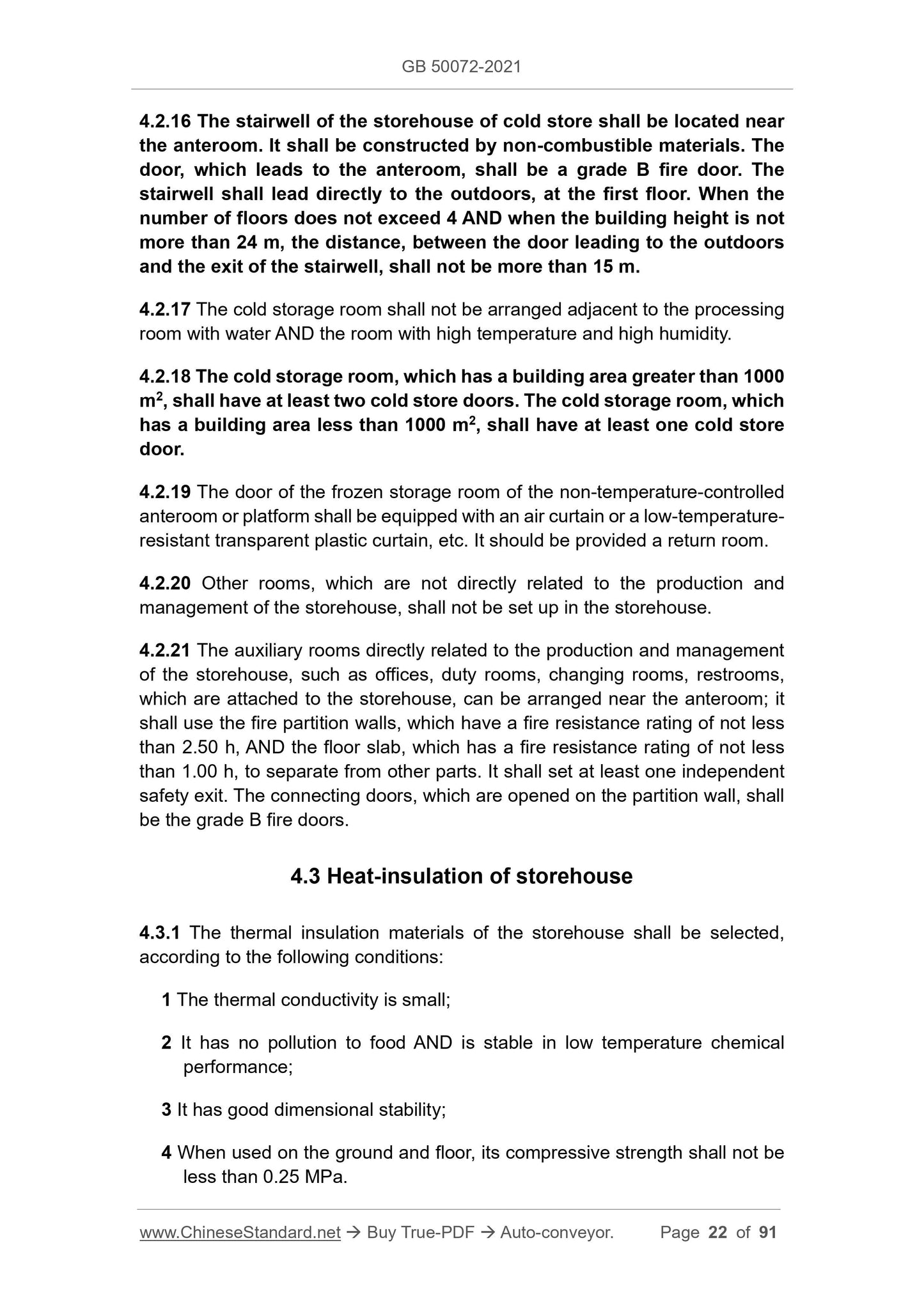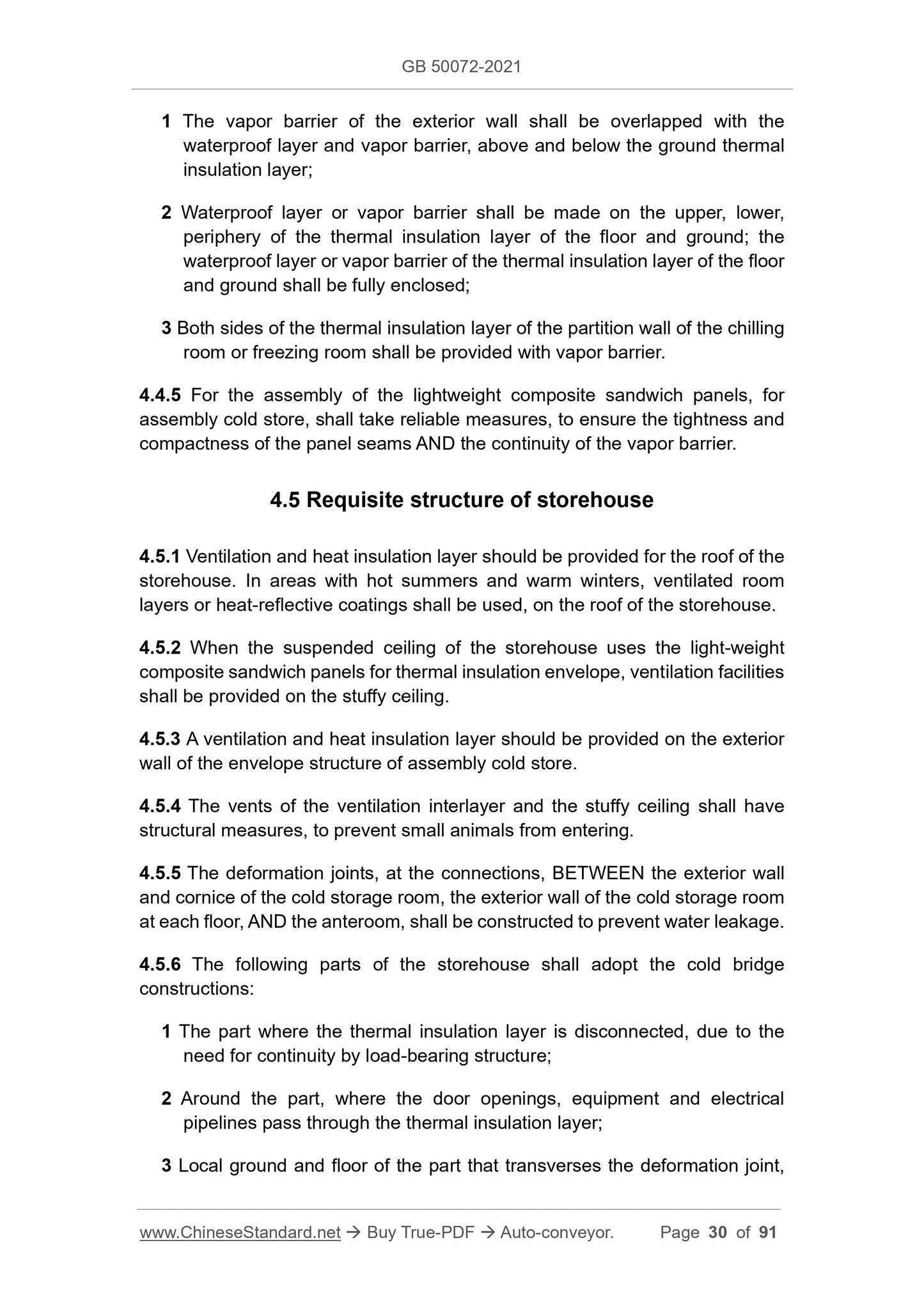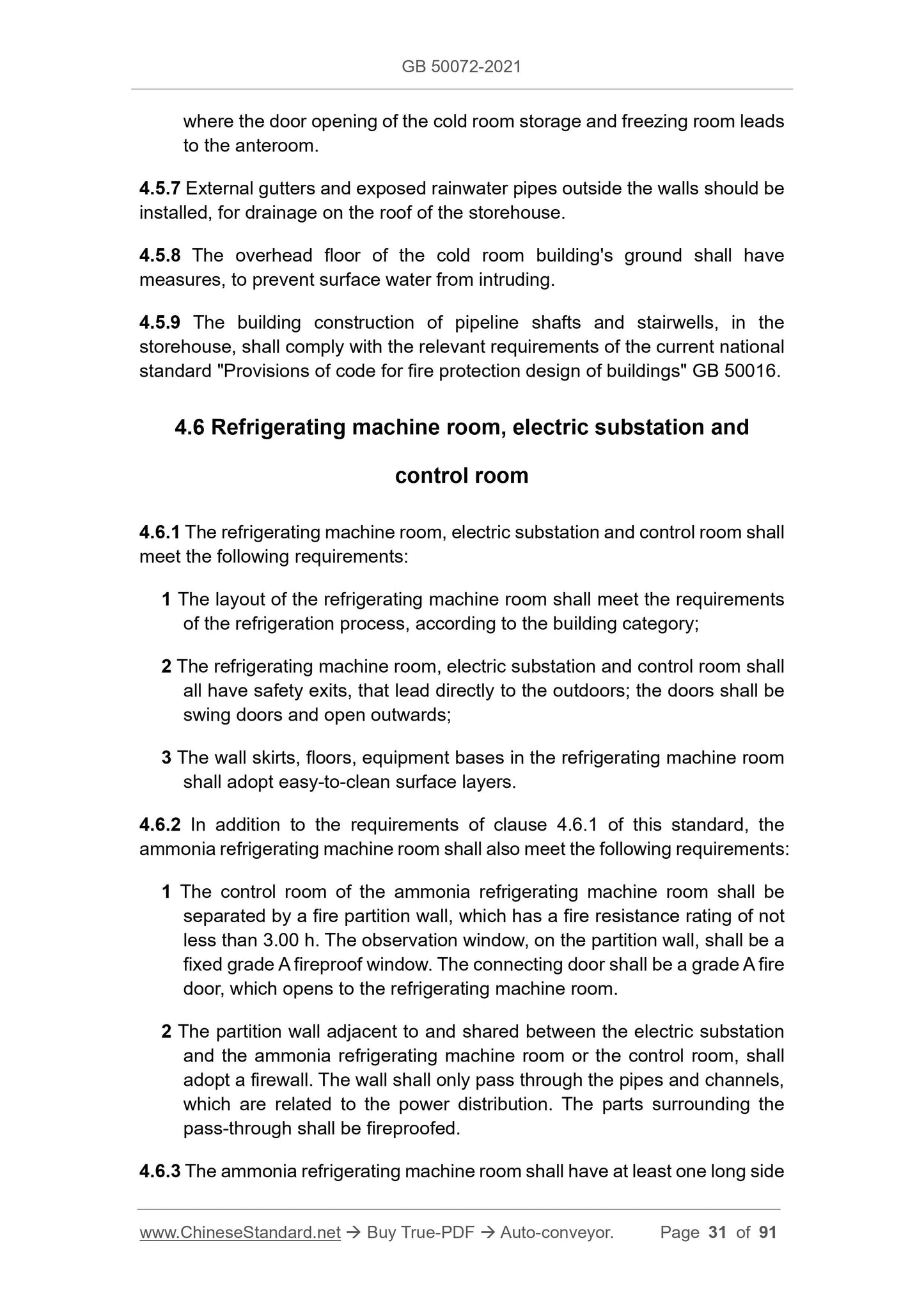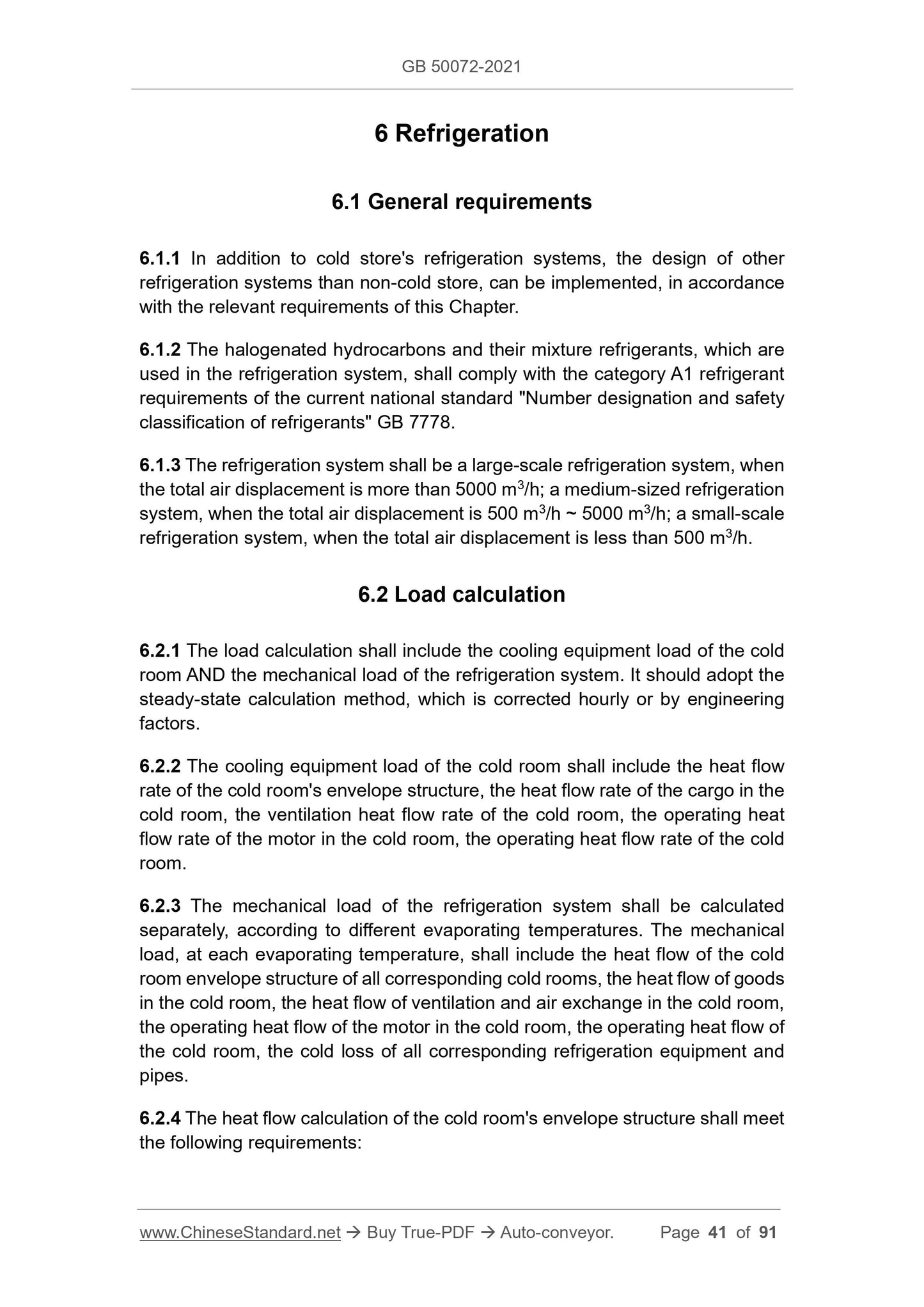1
/
of
12
www.ChineseStandard.us -- Field Test Asia Pte. Ltd.
GB 50072-2021 English PDF
GB 50072-2021 English PDF
Regular price
$905.00
Regular price
Sale price
$905.00
Unit price
/
per
Shipping calculated at checkout.
Couldn't load pickup availability
GB 50072-2021: Code for design of cold store
Delivery: 9 seconds. Download (and Email) true-PDF + Invoice.Get Quotation: Click GB 50072-2021 (Self-service in 1-minute)
Newer / historical versions: GB 50072-2021
Preview True-PDF
Scope
1.0.1 This standard is formulated, in order to standardize and integrate thetechnical requirements for design of cold store, guide the design of cold store,
meet food refrigeration technology and hygiene requirements, achieve the
goals of economical and reasonable, energy-saving, environmentally friendly,
safe and reliable.
1.0.2 This standard is applicable to the newly-built, expanded, reconstructed
food cold store, which adopts the subcritical vapor compression direct
refrigeration systems using ammonia, halogenated hydrocarbons and their
mixtures, carbon dioxide as refrigerants, AND the indirect refrigeration systems
using carbon dioxide, brine, etc. as refrigerating medium.
1.0.3 The cold store design shall be safe and reliable, energy-saving,
environmentally friendly, economically reasonable, advanced and applicable.
1.0.4 The cold store design shall not only meet the requirements of this
standard, BUT also meet the requirements of relevant national standards.
Basic Data
| Standard ID | GB 50072-2021 (GB50072-2021) |
| Description (Translated English) | Code for design of cold store |
| Sector / Industry | National Standard |
| Classification of Chinese Standard | P49 |
| Word Count Estimation | 133,155 |
| Issuing agency(ies) | Ministry of Housing and Urban-Rural Development of the People's Republic of China; State Administration for Market Regulation |
Share
